Kawasaki
Ki-61-I
'Tony'

The war in Europe had alerted the
Japanese Army to the possible need for heavier fighters comparable to
the latest European designs. In February 1940,Kawasaki received
development contracts for two new fighter designs under the
designations Ki-60 and Ki-61. Both were to use the German DB 601
engine that Kawasaki had obtained the rights to in 1937. The
first prototype of the Ki-60 first flew in March 1941 and though it had
a top speed of 350 m.p.h. the Japanese Army made no serious plans to
introduce a heavy fighter. As a result the Ki-60 was abandoned in favor
of the Ki-61. In parallel with the fighter Kawasaki had been at work on
a power plant derived from the DB 601, the Ha.40, which was lighter in
weight and produced 1,175 h.p. It was installed in the Ki-61, the first
prototype of which was completed in December 1941. The kI-61 achieved a
speed of 368 m.p.h., a performance never to be achieved in production
models until the introduction of the Ki-61-II in 1943. In 1942 a Bf 109E
and a captured Curtiss P-40E were flown in comparative tests with the
Ki-61 and it proved superior to both the American and German types.
Production of the Ki-61 had
already been initiated by that time, the type being accepted by the
Japanese Army as the Ki-61-I and named Hein. The Ha.40 engine had also
entered production and the first production Hein was completed in
August 1942 and was delivered to the J.A.A.F. in the same month. The
initial production models carried an armament of two 7.7-mm machine
guns in the fuselage and two 12.7-mm machine guns in the wings. It
embarked on its operational career in April 1943 in New Guinea where
the code name "Tony" was applied by Allied forces as they thought at
first the aircraft was of Italian design. It was quickly determined
that the Hein was under armed and was modified to carry two 20-mm
Mauser cannons in the wings in place of the 12.7-mm machine guns and
continued in production as the Ki-61-Ia.
The Hein proved to be the finest
all round fighters of the J.A.A.F.. and one respected by the Allied
pilots opposing it. It's maximum speed of 348 m.p.h. was adequate to
meet most demands made of it and its diving characteristics were far
superior to other Japanese fighters, as evidenced by the fact that it
could hold its own in a dive against heavier American fighters. Allied
pilots reported that the defensive tactics employed by Hein pilots
were difficult to counter as the aircraft seldom offered itself as a
good target. armor protection for the pilot and fuel was provided in
later models primarily for psychological reasons fostering the
aggressive employment of the Hein by its pilots. However the Ha.40
engine proved to be an unreliable engine which varied greatly in rated
power between individual models owing to lack of quality control in
production. The Ki-61 went on to be developed though further variants
with improved power plants but the Ki-61-I is the subject of this kit
so I'm going to stop here.
The
Kit
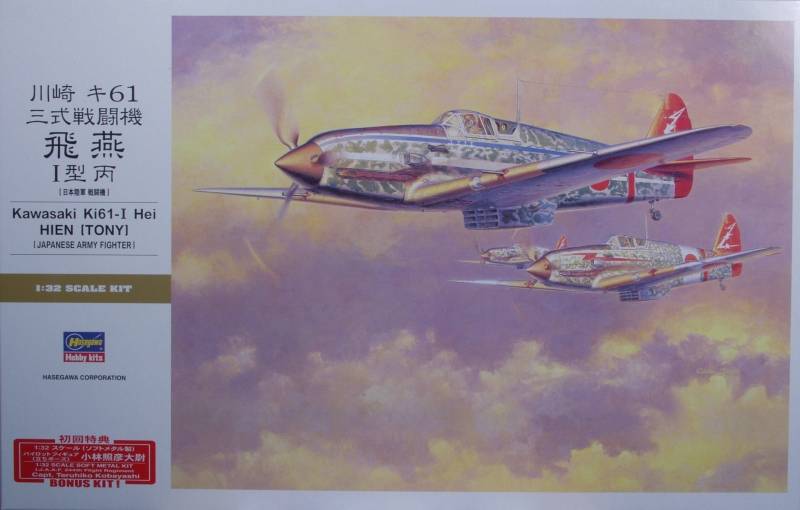
The Hasegawa kit comes in a medium large top open box with Hasegawa's
signature artwork on the top. Inside the box is one large bag with all of
the parts molded in light gray and a second bag with the clear parts. This
kit was released around 2007 so it is pretty much state of the art molding
wise with fine recessed panel lines and rivet detail. There is some raised
detail such as hinges and access panels and other items that are
appropriate. I found no surface defects on any of the main air frame
parts. The control surfaces are all molded in the neutral position and the
fabric detail is represented by rib tapes without the usually scalloped
sagging fabric effect use too often. The molding was sharp and clean and
one must look hard to find any flash. There are some light ejector pin
marks on the insides of the landing gear doors but they will mostly be
covered by the main struts and due to other raised detail in the area,
would be hard to clean up with out collateral damage. Two sided parts have
small parting lines that should clean up easily.
The cockpit has
a level of detail that should satisfy most. A nicely detailed pilot is
provided with separate heads, one with and one without an oxygen mask. The
tires are weighted and the kit provides two drop tanks. The propeller has
separate blades that are keyed to get the angles correct. The wing to
fuselage assembly utilizes a heavy spar which should insure a solid
mounting and correct dihedral. Apparently there is an extra access panel
molded in the top of each wing that wasn't used on this version and there
is a small addendum sheet in the box telling you to fill the panel lines
for this and shave off the associated hinge detail. The kit contains 151
parts according to the box which no doubt includes one or two parts you
won't end up using. See photos below.
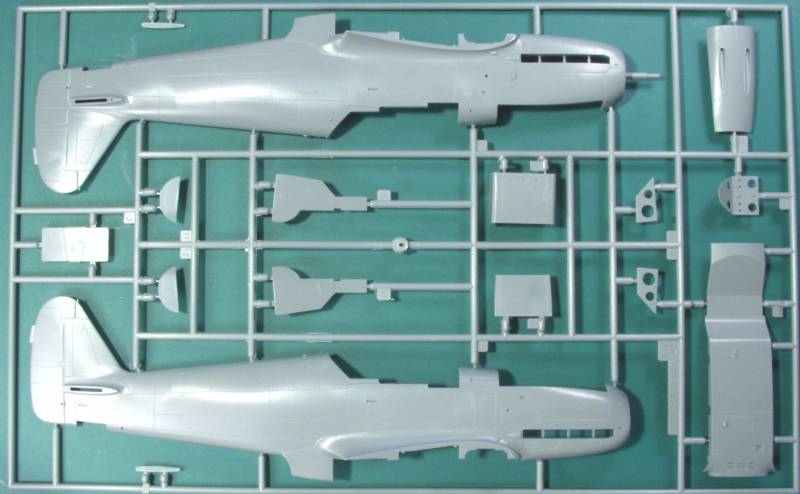
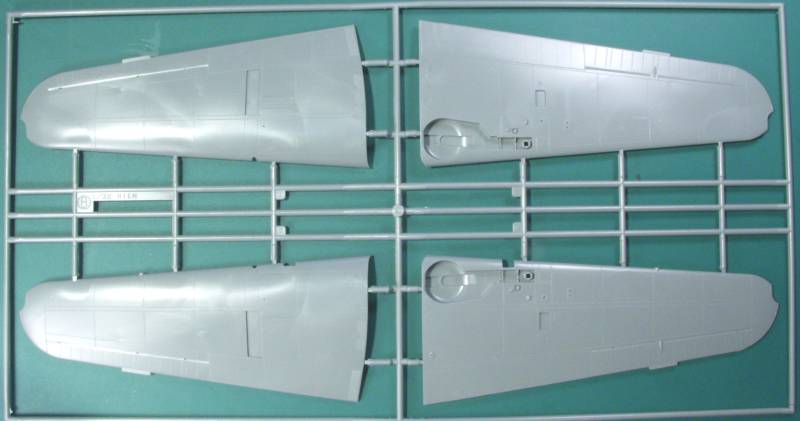
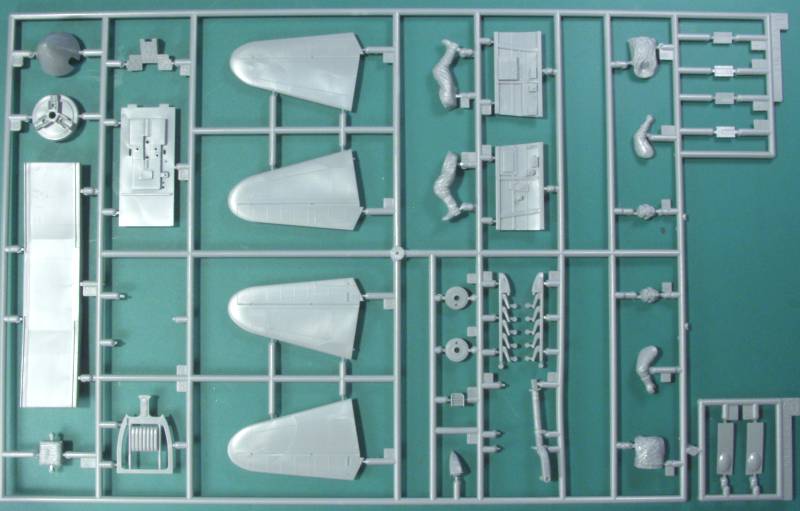
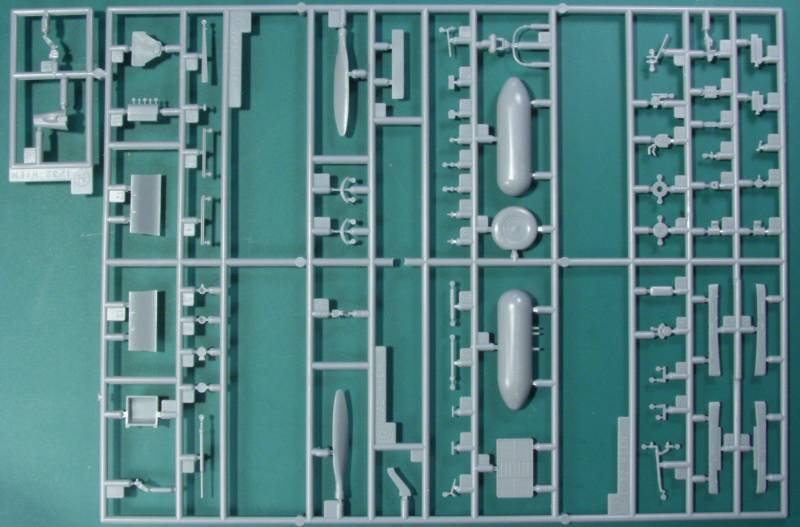
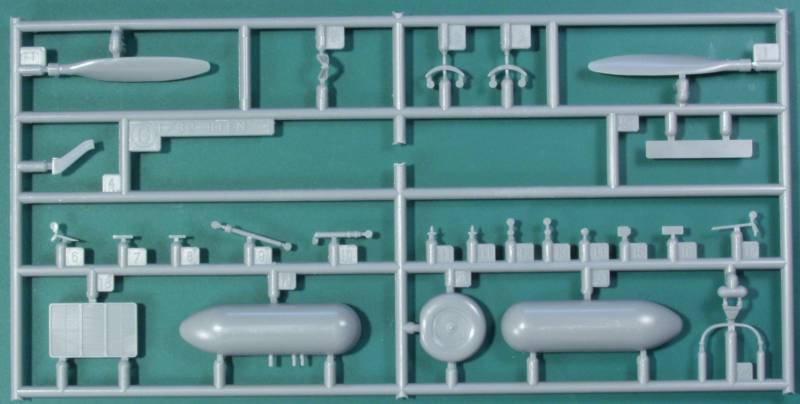
The
clear
parts are not as thin as some but are nice and clear with little
distortion in them. Both a closed one piece canopy and a three
part open canopy are included. Also included are navigation and
landing light lenses and clear parts for the reflector gun
sight. See below.

The
decals
provide marking for three aircraft. These are the newer style
Hasegawa decals with white that is actually white and not cream
colored. They are nicely printed and in register. They look a
bit on the thick side to me but they should be opaque anyway.
There are a fair amount of stencils supplied as well as kill
markings, instrument panel decals and decals for the radiator
screens. See below.
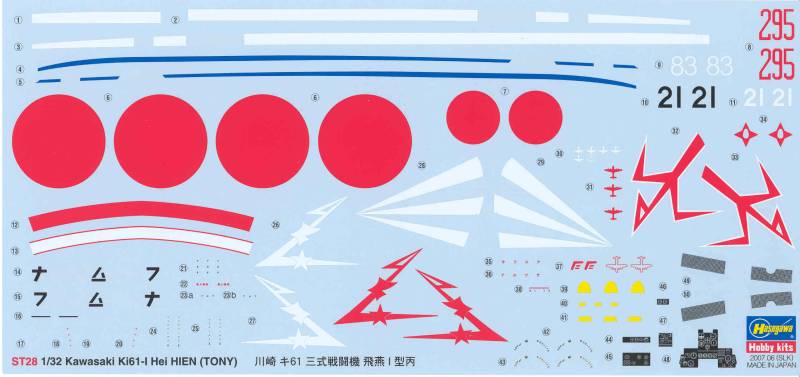
The
instructions
consist of a twelve page A4 sized booklet that is
stapled together. page one has history and
aircraft specifications in English and Japanese,
page two has a parts map and paint chart with
Gunze numbers and generic color names. Pages three
through eight are the assembly instructions, pages
nine through eleven are painting and marking
instructions and page twelve has basic assembly
and decal application notes and the usual safety
and health notices.
After
Market Goodies
I stated earlier that the cockpit
detail would satisfy most but I decided to splurge anyway as
seat belts are need and a thin metal seat almost always looks
better than the molded plastic part. This is the Eduard set #
32591. I'm always torn on Hasegawa kits because that have such
nice raise detail on the instrument panels and the PE tend to
be so one dimensional. Unfortunately my painting skills are
such that the prepainted PE looks so much better than my paint
work that I end up using them anyway. At least with this set I
have a choice. It also contains a few other parts that should
enhance the already nice cockpit. See below.
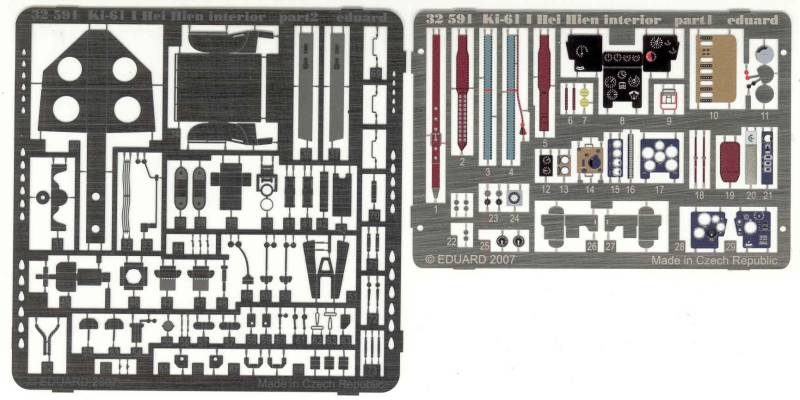
I
also opted for a set of landing gear doors from Quickboost (#32075)
Although
the photo doesn't show it they have a nice level
of surface detail, are thinner than the kit parts
and don't have ejector pin marks to clean up. See
below.

A
search at Sprue Brothers or squadron will bring up some
additional items.
Conclusions
This is a really nice kit, well
detailed right from the box and by all accounts easy to
build. Recommended for all but rank beginners.
Links
to kit build or reviews
Another in box review can be found here
and a build/review here.
References
Japanese Aircraft of the Pacific War
by R.J. Francillon
Back
to the 1/32 Scale Japanese Aircraft Page
Updated 7/7/13










